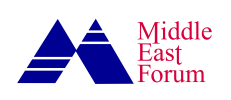Twenty years ago, the Islamic Republic drafted its “20-Year Development Vision Plan” which concludes this year. When formulated, President Mohammad Khatami’s so-called reformist government was in power, and many Western governments sought to engage Iran. The plan’s implementation, however, coincided with the rise of Mahmoud Ahmadinejad’s populist government and escalating tensions with the outside world.
Now, only a few months from the plan’s expiration, its failures are evident. The June 2025 war with Israel exposed the failure of its objective to create “a secure, independent, and powerful nation with a defensive system based on comprehensive deterrence and the cohesion of people and government.” Israel destroyed almost the entirety of Iran’s air-defense systems at the outset, while society displayed no solidarity with the government despite a foreign attack.
Another core dimension of the plan—economic growth and citizens’ welfare—has also collapsed. Rather than progress, Iran has regressed over the past twenty years. The Vision explicitly called for Iran to achieve the leading position in the region in economy, science, and technology, with sustained high growth, improved per capita income, and full employment. This, too, has failed.
Two decades ago ... only Turkey and Saudi Arabia had larger economies; the rest of the region lagged well behind Iran.
In 2005, Iran aimed to become the region’s top economy by 2025. Yet, according to International Monetary Fund estimates, Turkey’s economy is now four times larger, Saudi Arabia’s three times, and the gross domestic products of the United Arab Emirates and Israel are, respectively, 60 and 70 percent greater than Iran’s, despite having populations far lower. Pakistan has recently surpassed Iran, leaving the Islamic Republic only slightly ahead of Kazakhstan. Two decades ago, in contrast, only Turkey and Saudi Arabia had larger economies; the rest of the region lagged well behind Iran.
Iran’s gross domestic product did grow significantly up until 2012—reaching over $625 billion amid soaring global oil prices—but international sanctions seeking to compel Tehran into nuclear compliance and to cease its destabilizing regional role then triggered a steep decline. Today, Iran’s gross domestic product is roughly half its 2012 level. Meanwhile, the national currency has collapsed. The exchange rate fell from 9,000 rials per dollar in 2005 to about 1,040,000 rials today—a 99 percent loss of value.
This economic downfall coincides with the recent activation of the “snapback” mechanism by three European parties to the Joint Comprehensive Plan of Action, the 2015 Iran nuclear deal, citing Iran’s violations of its nuclear commitments. With international sanctions set to return, Tehran—for the first time in seventy years—has no long-term economic vision or development plan in place.
Under Mohammad Reza Shah Pahlavi—Iran’s last monarch before the 1979 Islamic Revolution—the government had announced long-term development goals. The Shah’s “White Revolution” envisioned raising Iran’s standard of living to European levels by 1991 and joining the ranks of industrial powers such as France, Britain, and Italy by 2001. While these targets were ambitious, Iran’s economy did grow nearly ninefold in the shah’s final decade, from $11 billion to $90 billion, making it the second-largest economy in the Middle East after Saudi Arabia.
The Islamic Republic’s Vision Plan also aimed for regional leadership in science. Yet, reports reveal a brain drain: 110,000 highly skilled Iranians emigrated in 2024 alone. United Nations statistics show that the ratio of Iranian students abroad compared to those at home has increased 2.5-fold over two decades, while in countries like Saudi Arabia, the United Arab Emirates, and Turkey the ratio has halved.
President Masoud Pezeshkian admitted last year that up to 80 percent of students were considering emigration, while his science minister noted that 25 percent of university professors had left in recent years.
In 2005, working two days a week counted as employment; today, just one hour a week suffices.
Since 2005, Iran’s population has grown by 23 million, yet the number of employed has risen by only seven million. Moreover, statistical definitions of “employment” have been downgraded: In 2005, working two days a week counted as employment; today, just one hour a week suffices. In reality, employment under the old criteria has stagnated over two decades.
Seyed Malek Hosseini, deputy minister of labor, admitted in May that if measured by 2005 standards, employment levels have not increased at all. He also noted that Iranians’ economic participation rate is 19 percent below the regional average, at just 41 percent—evidence that much of the workforce has simply abandoned the job market out of despair.
According to Iran’s Statistical Center, real per capita income fell by around 20 percent between 2011 and 2023. Officials themselves have acknowledged that up to 60 percent of Iranians may now live below the poverty line. A telling indicator is red meat consumption: Per capita intake has dropped 40 percent over the past decade, and Turks consume more than three times as much meat as Iranians today.
Iranian officials often claim great progress. They exaggerate gains and go silent on losses. Too often, they calculate that their supporters and Iran’s cheerleaders abroad have no institutional memory to recognize just how empty their promises and declarations are. The end of the 20-Year Development Vision Plan, however, cannot be swept under the rug. It represents nearly half of the Islamic Republic’s existence. By its predictions and standards, there is no question: The regime’s leadership has failed, and Iran’s economic position in the region is in free fall.







